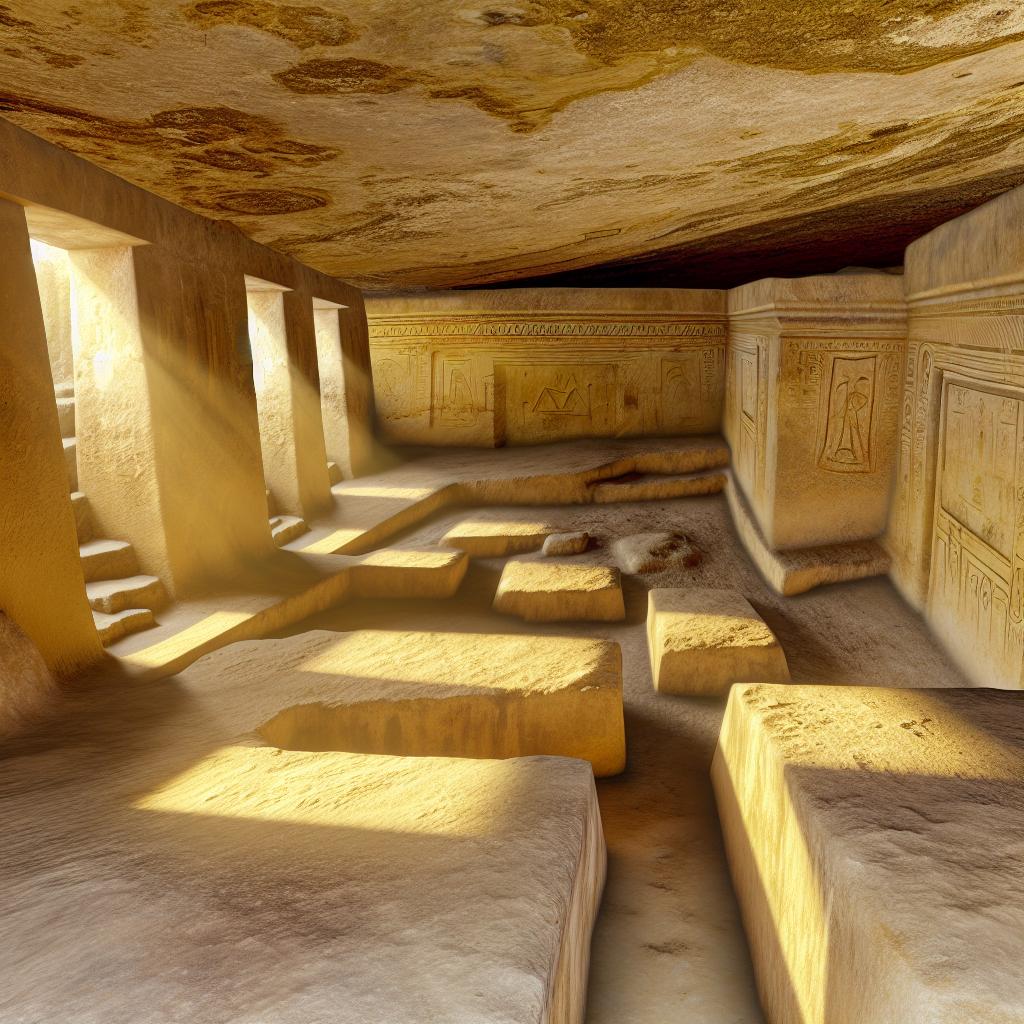The Hal Saflieni Hypogeum: An Architectural Marvel
The Hal Saflieni Hypogeum, located in the small town of Paola on the island of Malta, remains significant as one of the most important and intriguing prehistoric sites worldwide. This vast subterranean structure dates back to around 4000 BCE and serves as a window into the spiritual and cultural practices of the early inhabitants of the Maltese islands during the Neolithic era.
Architectural Significance
The Hypogeum, a remarkable feat of ancient engineering, comprises an extensive underground complex composed of rock-cut chambers, halls, and passages. It covers three levels, each serving various functions. Constructed over many years, it reflects different phases of prehistoric architectural innovation and utilization. The creators of the Hypogeum exhibited an exceptional mastery of engineering principles and stone-carving techniques, managing to transform solid limestone into an expansive and intricate complex using only the most rudimentary tools available at the time.
The Layout
The architectural layout of the Hypogeum is both complex and purposeful. It is divided into three distinct layers, each playing its own role in the function of the site. The upper level encompasses a network of chambers, believed to have primarily functioned as a burial site. This area offers significant insights into the burial practices and rituals of the ancient Maltese people.
In contrast, the middle level contains the most ornate and elaborate chambers, with the distinguished *Oracle Room* among them. The *Oracle Room* is renowned for its remarkable acoustics and the striking red ochre paintings adorning its ceiling. The significance of this chamber suggests it may have been used for important ceremonial purposes and rituals.
The lower level of the Hypogeum is less refined and remains mostly unfinished. Speculation suggests it might have served as an additional storage area or an extension of burial facilities. The purpose of this lower portion is not entirely clear but adds to the mystery and historical intrigue of the site.
Ritualistic and Cultural Importance
The Hal Saflieni Hypogeum holds immense ritualistic and cultural significance, extending beyond its function as a burial site. Archaeological investigations indicate that it was likely a venue for a variety of religious and ritualistic activities. The site’s intricate carvings and ochre paintings, combined with the acoustically resonant chambers like the *Oracle Room*, underscore its importance as a place of cultural and spiritual magnitude.
The uncovering of over 7,000 human skeletal remains within the Hypogeum underscores its extensive use over centuries as a necropolis. Along with its primary role in burial practices, the Hypogeum may have been a setting for various rituals, and there is speculation that sacrificial ceremonies could have taken place within its chambers.
Conservation Efforts
Owing to its delicate nature and immense historical value, the Hal Saflieni Hypogeum has been the focus of stringent conservation efforts. These efforts date back to the mid-20th century when significant restoration work provided valuable insights into the methodologies for preserving and protecting this precious site. Recognized as a UNESCO World Heritage Site, it is crucial to ensure that future generations can study and appreciate this marvel of prehistoric architecture.
Today, stringent controls are in place to preserve the Hypogeum’s unique atmosphere and structural integrity. Daily visitor numbers are limited to reduce human impact and potential damage. Additionally, access is only available through guided tours, which provide a controlled and informative experience for guests while safeguarding the site. Those wishing to explore this fascinating site are encouraged to book tickets in advance through the [Heritage Malta website](https://www.heritagemalta.org/museums-sites/hal-saflieni-hypogeum/), where detailed information on visiting hours and booking procedures is available.
In conclusion, the Hal Saflieni Hypogeum stands as a valuable testament to the ingenuity, cultural richness, and spiritual life of the early peoples of Malta. It continues to draw the attention of archaeologists, historians, and enthusiasts across the globe, all eager to uncover and appreciate the hidden mysteries and wonders of this ancient civilization.

